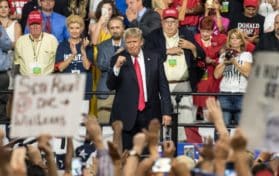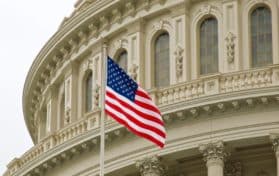
The notion of a military conflict between the United States and China, two global superpowers, stirs considerable anxiety and speculation. As the world’s leading nations in economic might and military capabilities, the implications of such a confrontation are profound, affecting not just the involved parties but also the global order. This article explores the hypothetical scenario of a USA vs. China war, delving into the historical context, political dynamics, military strategies, economic impacts, and the broader geopolitical consequences. While purely speculative, this exploration is grounded in expert analysis and seeks to understand the possible ramifications of such a grave situation, emphasizing the critical need for diplomacy and peaceful resolution.
Historical Relations Between The USA And China
The historical relations between the United States and China have been complex and multifaceted, marked by periods of both cooperation and confrontation. Here are key points that highlight the evolution of this significant bilateral relationship:
Early Encounters (18th and 19th Centuries): The U.S.-China relationship began in the late 18th century, focusing initially on trade. American merchants were active participants in the Canton trade system, dealing in goods such as tea, silk, and porcelain.
Open Door Policy (1899): In the late 19th century, the U.S. advocated for the Open Door Policy, which aimed to ensure equal trading rights for all nations seeking to do business in China, countering the more exploitative colonial approaches of European powers
World War II Collaboration (1937-1945): During World War II, the U.S. provided substantial military and financial support to China in its fight against Japan. This period was characterized by a strong wartime alliance, with the U.S. viewing China as a significant partner in the Pacific.
Cold War and Isolation (1949-1971): Relations deteriorated following the establishment of the People’s Republic of China (PRC) in 1949. The U.S. refused to recognize the PRC and instead maintained diplomatic relations with the Republic of China in Taiwan. This period was marked by mutual hostility and indirect conflict, especially during the Korean War and the Vietnam War.
Nixon’s Visit and Normalization (1972-1979): President Richard Nixon’s historic visit to China in 1972 marked a thaw in relations and led to the Sino-American rapprochement. Formal diplomatic relations were established in 1979, as the U.S. officially recognized the PRC and severed formal ties with Taiwan, although it continued to maintain a strong unofficial relationship with the island.
Economic Integration and Tensions (1980s-present): Since the 1980s, economic ties have deepened significantly, with China becoming a major hub for American manufacturing and investment. However, this economic interdependence has been accompanied by friction over trade imbalances, intellectual property rights, and, more recently, technology and security issues.
Recent Strains (21st Century): In the 21st century, the relationship has been increasingly strained by issues such as military buildup in the South China Sea, human rights concerns, and strategic competition in technology and influence. These tensions have been compounded by shifts in global power dynamics, with both nations viewing each other as principal rivals on the world stage.
Political And Geopolitical Considerations
The political and geopolitical landscape between the United States and China is a critical component of their bilateral relationship, marked by a mixture of competition and cooperation. Here are some key considerations in understanding the political and geopolitical dynamics:
Political Systems and Ideology:
The political systems of the U.S. and China are fundamentally different. The U.S. operates under a democratic framework with open elections and a multiparty system, while China is governed by the Communist Party, which maintains strict control over political power. These differing ideologies contribute to mutual suspicion and often color their interactions on the world stage.
Leadership and Domestic Politics:
Leadership styles and domestic political pressures significantly influence each country’s foreign policies. In the U.S., foreign policy can shift dramatically between administrations, reflecting the changing priorities of the American electorate. Conversely, Chinese leadership tends to have more continuity but is not immune to internal pressures, such as economic performance and public opinion, which can drive a more nationalistic foreign policy.
Strategic Interests and Global Influence:
Both nations seek to expand their global influence, but their strategic interests sometimes clash. The U.S. has traditional alliances in Asia with countries like Japan, South Korea, and the Philippines, and has been pivoting more resources and attention to the region as a counterbalance to China’s rise. China, on the other hand, seeks to assert its dominance in its immediate region, pushing claims in the South China Sea and initiating projects like the Belt and Road Initiative to expand its influence further.
Taiwan and Other Flashpoints:
Taiwan remains one of the most volatile issues between the U.S. and China. The U.S. continues to provide defensive support to Taiwan under the Taiwan Relations Act, despite not officially recognizing it as a separate nation from China. Other regional flashpoints include disputes in the South China Sea and China’s border with India, where U.S. interests and alliances come into play against Chinese territorial ambitions.
International Organizations and Multilateralism:
The approach to international organizations and global governance also highlights differences. The U.S. traditionally championed multilateralism (although this has wavered in recent years), using platforms like the United Nations to promote global stability and democratic values. China has increased its participation and influence in these organizations, often pushing back against what it perceives as Western dominance.
Economic Leverage and Trade:
Economic strategies also play a significant geopolitical role. The U.S. and China are each other’s largest trading partners, which binds them in a complex web of dependency and competition. Economic tools, including tariffs, trade agreements, and sanctions, have become prominent in their geopolitical strategies, influencing wider diplomatic and strategic relations.
Technological Rivalry:
Technological advancements and control over technology supply chains have emerged as critical aspects of U.S.-China geopolitical competition. Issues like 5G technology, artificial intelligence, and cybersecurity are not just economic and security concerns but also pivotal in geopolitical positioning.
Overview Of Both Countries’ Military Strengths And Technologies
The military strengths and technological capabilities of the United States and China are key factors in their global influence and strategic posture. Here’s an overview of each country’s military assets and technological advancements:
United States
The U.S. military is one of the world’s most formidable armed forces, with a broad global presence supported by numerous bases around the world. It comprises the Army, Navy, Air Force, Marine Corps, and Coast Guard, each with significant capabilities.
The U.S. leads in the development and deployment of advanced military technologies, including stealth technology, precision-guided munitions, advanced fighter jets like the F-35, and a robust nuclear arsenal. It also has superior satellite and surveillance capabilities that provide a strategic advantage in intelligence gathering.
The U.S. Navy is unmatched, with the largest number of aircraft carriers and a large fleet of nuclear submarines, destroyers, and support vessels. This enables power projection across the world’s oceans.
The U.S. Air Force possesses a diverse array of aircraft, from advanced fighters like the F-22 Raptor to large fleets of drones and the world’s leading aerial refueling capabilities.
The U.S. maintains one of the world’s largest nuclear arsenals, with a triad of land-based missiles, submarine-launched missiles, and strategic bombers, providing a comprehensive deterrent capability.
The U.S. has heavily invested in cyber warfare capabilities and space technology, recognizing the importance of these domains for future military operations. The establishment of the U.S. Space Force highlights this strategic shift.
China
The People’s Liberation Army (PLA) has undergone significant modernization efforts aimed at transforming it into a world-class military by 2049. This includes advancements in missiles, integrated network electronics, and a shift towards a more mobile, agile military force.
China has the largest standing army in the world, complemented by massive manpower reserves. This sheer number provides China with substantial ground force capability.
The PLA Navy has been expanding rapidly, focusing on aircraft carriers and submarines, aiming to establish a blue-water navy capable of operating globally. Recent additions include domestically built aircraft carriers and modern destroyers.
The PLA Air Force has developed new generations of fighter jets, such as the J-20 stealth fighter, and is enhancing its capabilities in electronic warfare and air defense systems.
China is a global leader in missile technology, including anti-ship ballistic missiles and a range of medium and intercontinental ballistic missiles, some capable of carrying nuclear warheads.
While China’s nuclear arsenal is smaller than that of the United States, it is rapidly modernizing its force with a focus on survivability and second-strike capability. Additionally, China has developed robust cyber warfare capabilities, viewing cyber as a critical battlefield.
Expert Opinions And Military Analysts’ Perspectives On Plausible Scenarios
The strategic rivalry between the United States and China is a topic of extensive debate among military analysts and experts, who explore various scenarios that could arise from this competition. Below are some key perspectives and plausible scenarios discussed by experts in military and strategic studies:
- Conventional Conflict: Some analysts consider a direct conventional conflict over regional flashpoints like Taiwan or the South China Sea. The U.S. could be drawn into a conflict if China attempts to alter the status quo forcefully, especially in Taiwan, which the U.S. is bound by law to help defend. The consensus is that while a full-scale war remains unlikely due to the catastrophic consequences, smaller, limited skirmishes or accidental encounters could escalate.
- Economic and Cyber Warfare: Experts often point out that the more likely forms of conflict would be non-military, such as economic sanctions, trade wars, or cyber attacks. The U.S. and China might engage in intensified cyber warfare targeting critical infrastructure or economic bases, leading to significant economic and social disruption without crossing into the domain of conventional warfare.
- Proxy Wars and Influence Operations: Some scenarios involve indirect conflict through proxy wars or influence operations in third countries. Both nations might support rival factions or governments, similar to the Cold War dynamics between the U.S. and the Soviet Union. This could occur in regions like Africa or Southeast Asia, where both powers have significant strategic interests.
- Naval Engagements in the South China Sea: The South China Sea is another potential flashpoint where experts predict increasing tensions could lead to naval confrontations. Both nations might engage in a show of force through freedom of navigation operations by the U.S. and territorial claims enforcement by China, potentially leading to stand-offs or clashes at sea.
- Space and Technological Rivalry: Military analysts also consider the possibility of a technological race leading to conflicts in space or through advanced warfare technologies like AI-driven autonomous weapons. Space could become a contested domain, with both nations developing anti-satellite weapons and other space-capable military technologies.
- Nuclear Deterrence and Escalation: While nuclear war is deemed the least likely scenario due to the principle of mutual assured destruction, the modernization of nuclear arsenals and development of missile defense systems could lead to an arms race impacting strategic stability. Analysts emphasize the importance of nuclear deterrence and the catastrophic risk of any miscalculation leading to escalation.
- Diplomatic and Crisis Management: Many experts stress the importance of robust diplomatic channels and crisis management mechanisms to prevent escalation from any military confrontation. The establishment of hotlines, regular dialogues, and confidence-building measures are often suggested to mitigate risks.
Bottom Line
The bottom line in the complex relationship between the United States and China is that while a direct military conflict remains unlikely due to its potentially catastrophic consequences, competition and tensions will likely persist across various domains. These include economic, cyber, and technological arenas, as well as strategic geopolitical regions such as the South China Sea and Taiwan. Military analysts and experts emphasize the importance of maintaining robust diplomatic channels, crisis management mechanisms, and international cooperation to manage and mitigate these tensions. The focus is on ensuring that rivalry does not escalate into open conflict, preserving global stability and promoting peace in international relations.
FAQ’s
- How would the USA and China’s military capabilities compare in a conflict?
- The USA holds advantages in naval power, air superiority, and nuclear capabilities, with a network of global bases and alliances. China has significant regional strengths, particularly in missile technology and sheer manpower, and is rapidly modernizing its military forces.
- Could there be a nuclear conflict between the USA and China?
- While both nations possess nuclear weapons, the principle of mutual assured destruction (MAD) makes a nuclear conflict highly unlikely. Both sides are expected to avoid scenarios that could escalate to the use of nuclear arms.
- What would be the global impact of a US-China war?
- A conflict between these two superpowers would have severe global repercussions, affecting worldwide economic stability, disrupting international trade routes, and potentially drawing in other nations into a broader conflict.





